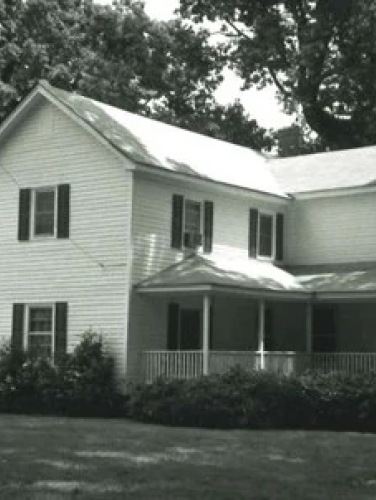
James Morrow Coffey House
(ca. 1886)
Three generations of the Coffey family inhabited this century-old Steele Creek farmhouse.
3300 Shopton Road, Charlotte, NC, 28217
A native of Lancaster County, South Carolina, James Morrow Coffey (1805-1893) moved to the Steele Creek community of Mecklenburg County in the early 1850s. A farmer by trade, Coffey eventually acquired over 300 acres of land along a branch of Big Sugar Creek that is now known as Coffey Creek. James, his wife Eliza Alexander Coffey (1810-1870) – whose grandfather Ezra Alexander has been credited as a signer of the purported Mecklenburg Declaration of Independence – and their five surviving children lived in a series of humble log houses on their large farm. Such log homes were typical of Scotch-Irish farmers like the Coffey family, whose ancestors had learned the building techniques from German immigrants in Pennsylvania and brought the building style with them to the Carolina piedmont.
Property Quick Links
The Coffey family quickly became enmeshed in the closely-knit Steele Creek farming community and the Central Steele Creek Presbyterian Church, then the area’s largest Presbyterian church. All three of James and Eliza’s daughters married into the locally prominent Spratt family. With the help of his youngest son Rufus Coffey (1848-1935), James’ farming operations included cultivating wheat, cotton and corn as cash crops, logging his woodland acres for timber (mainly pine and hickory), and raising hogs, chickens, and other livestock. James did own five enslaved persons according to the 1860 U.S. census. However, because of their ages – one woman aged 39, two boys aged 10 and 17, and two girls aged 2 and 5 – it is unclear how they may have been involved in the operation of the Coffey family farm.
The Coffey farm flourished after the Civil War, allowing James and Rufus to replace the family’s log house with the still extant two-story modest I-house in 1886. By then a widower – Eliza had passed away in 1870 – James lived out his remaining years in the new house, sharing it with Rufus, Rufus’ wife Amanda Utley Coffey, and their ten children. James remained an active member of the community, serving as an elder for the Central Steele Creek Presbyterian Church. Upon his father's death in 1893, Rufus (himself a widower since Amanda’s death the year before) inherited the Steele Creek farm, the house, several outbuildings (including a log structure of indeterminate use that likely predates the extant Coffey House), and more than 200 acres where he reared his ten young children and continued operation of the family farm.
Although he never remarried, Rufus shared the farmhouse (which he had expanded around 1900) with his son Willie and his two unmarried twin daughters, Amanda Rose and Eula. They were the last descendants of James and Eliza Coffey to live in the Coffey House.

